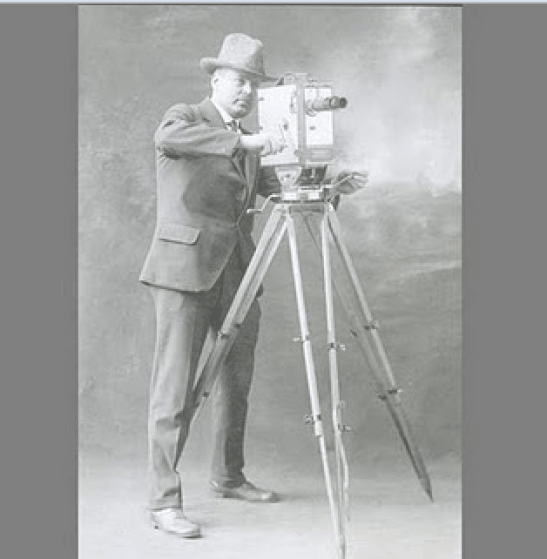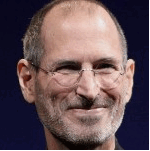|
The Linkedin headshot has given many people consternation. If you have been on Linkedin long enough you have seen the range of portraits from cartoons to the chiaroscuro mood-invoked Rembrandt headshots. I have seen people do really some really poorly branded photos from passport images to overly dramatic poses. Here are some basic things to consider when using a photo on Linkedin:
1. It is not optional. Weird ideas fill a void. If you don't have a photo, then viewers of your profile will use their imaginations to create their own image of you. Leaving people to their imaginations usually is not in your favor. You will inevitably disappoint in person. 2. About disappointing in person, use a realistic image of you that is relatively current. Over ten years? Hair dyed a new color or fell out? Gained or lost 40 pounds? It is time for a new photo as you will most definitely shock in an in-person meeting. This is definitely a "what you see is what you get" situation. 3. Dress appropriately for the audience and the business demographic you are targeting. If you are looking for business or a job in tech then dressing in a formal dark suit and red silk tie might be off-putting when the business dress code for the company is yoga pants, jeans, and hemp shirts. This is probably the most important tip as to how you are dressed creates a first impression that is hard to erase. Plus, take off your tint-adjusting glasses when outdoors. 4. The setting and pose is a question of relevance. If you are in law enforcement, outdoor sports, or any risky business then a skydiving shot of you at 9,000' might be a great pose . In chartered accounting, banking, brain surgery, maybe not so much. Same could be said for the really cute pose taken at Burning Man or Coachella. Keep your personal life off Linkedin. 5. Look forward at the viewer or towards the center of the screen. This is crucially important now that Linkedin has moved photos to the left side of the screen as you view it. If your body and head are facing out to the left as well, the portrait image creates an unconscious psychological dissonance with the rest of the layout. 6. In the same vein, the background color and view can add or detract. An all white background ranks higher than the ubiquitous corporate photo gray or worse Hollywood black. White is young, edgy and won't fight with your Linkedin background banner that hopefully, you have customized (a topic of another article). 7. Finally, look happy...not cool, inviting, engaging, business-like, professional, or a leader (whatever that is), Just be happy when the shutter snaps. Happiness is contagious and welcoming to everyone. Trust in the portrait-making process,and hire a professional photographer, not your wife or partner. Pick a decent background and outfit. Don't worry, be happy..
18 Comments
 I was thinking about a potential client's request to see samples of professional websites that I have done. They thought that building their brand was as easy as copying a site of someone one in the same profession. I guess that's half true. Nowadays, anybody can build a website for free as exampled by a 10 year old using Weebly http://addiesrainforest.weebly.com/. Wix, webstarter, Yolo, Squarespace can also do the job. Of the 100+ websites I have done for professionals since 2009, My fee was never for the actual building of website, though it was included with the end product. Actually, the need was for unique branded content that put them on the cyberweb in the most favorable light. This is the crux of Web 2.0 and online personal branding that has someone wanting to talk to me. Today, a faxed, mailed, or emailed resume is the mere beginning of a brand, and cannot begin to address personal branding. Linkedin and social media have been the game changers in the past 10 years. The Internet has birthed online branding as a complimentary adjunct to a networked job search. This has challenged everybody, especially executives, in today’s global economy to step up their game and tell a good story. A good brand combined with a solid network are the real job security across companies, borders, and industries. How many articles, webinars, and eBooks are out there now on personal branding? Fortunes have been made telling you what to do. But, what to do is not how to do it. Content and telling a good story is strictly personal. Looking at other people’s self-marketing won’t help you determine and create your own unique value proposition that articulates solutions to re-position or better position you in the marketplace. A well done, integrated brand tells your story in an engaging and appropriate way across digital platforms. Thus, your website's solutions page echoes your accomplishments on your resume and longer story on Linkedin, and they all are further elaborated on in your blog postings. It is a orchestrated effort to build thought leadership, make you stand-out, and be differentiated from others seeking the same opportunities. Bottom-line, why should you be considered? Your brand tells that story. This sophisticated positioning and personal branding is where a good career coach should be able to help you build and tell your story, and it is why executives seek my services. I help you to develop your branded content across platforms, and rebrand yourself to vie for new opportunities. And, you can’t afford to not get it right the first time. There are no second first-impressions on the Internet. 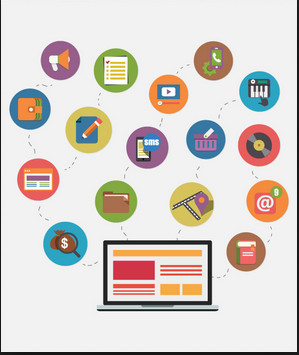 Selling a service is like selling heroin...you need to get your customers rapturously hooked. Linkedin is the consummate example of this. When you think of your job search and how you present yourself, are you offering engagement with a set of services or are you presenting you, the product? Seems to me that the more valuable course would be to present services to a company that they can partake of through a free advisor role, short term immediate consulting, or a longer term engagement. Thinking not about you the candidate to be hired as a product frees you to creatively present scenarios where engagement is win win for both you and the company. The Product-Service Shift – Transforming Your Operating Model by Geoffrey Moore (via Linkedin Pulse) As digital devices, cloud computing, and smart phone apps permeate more and more of our interactions, the product-service shift is overtaking more and more of our economy. This is a good thing from the point of view of lowering barriers to adoption and delivery costs, but it is a real challenge for vendors to transform their operating models to leverage the new infrastructure. A big part of the problem is simply getting our heads around the new paradigm. So much of the language of business is stuck in the old vocabulary, and that is causing us to make wrong choices without even knowing it. Let me show you what I mean. Take the combined notions of product marketing and product management. In a product company, although we often argue whose job it is to do what, we know overall what scope of work is involved. You have to spec out a set of features customers want, work with engineering to get them built into the product, work with marketing to get the product promoted, work with sales to get it sold, and work with customer support to get it serviced (and to collect a set of enhancement request for the next spec). But that is not at all how a service business works. Service customers don’t want features, they want outcomes. They don’t trust marketing that is outside the service experience; they expect to learn, try, and buy from inside the service delivery envelope. They don’t expect to be sold to, nor do they expect to use customer support unless somehow the service fails to deliver, which is more likely simply to cause them to churn out. So product marketing and management now equates to creating a completely contained environment within which both the prospective customer and the service vendor can experiment with each other across a digital interface to see if they have something of value to exchange. In this model there are no product releases. That is an obsolete notion that radically disrupts the low-latency give and take of a digital service engagement. Instead, the rhythm of that engagement is set by the spinning of four gears—Engage, Acquire, Enlist, and Monetize—all of which happen inside the service envelope. That means that engineering has to design and build the marketing directly into the service infrastructure, including whatever branding is needed. And the whole thing has to be built to evolve as A/B testing teaches us all what’s to, or not to, like. And that brings us to the freemium business model, in which there are no free trials because that concept implies that, if you like the trial, you will buy the product. That is not how a service model works. If you like the product, you will continue to engage with it, for free! Only after you have engaged deeply enough to be interested in a greater level of service can monetization be introduced. Here again the product mentality creates the wrong mindset. Product thinking says withhold the really valuable features, or give people a thirty day window, or do some other semi-coercive tactic to give you leverage in a purchase negotiation. These are dumb moves in the world of digital services, where losing the lifeline of user engagement costs you much more than continuing to support free. You have to learn how to woo rather than to bargain. And when it comes to purchasing, we think we want consumers to sign a license agreement, but that is a product concept designed to put power into the hands of the product vendor. What we want service customers to do instead is activate an account, something that keeps the power in their hands while creating a medium by which they can indeed spend money with us. The verb here is activate, not install, and our customer servicer outreach has to be structured accordingly. Similarly, when it comes to training, there can be no training. That is a product concept. Instead we need to orchestrate an onboarding process, one in which the user is guided through an experience instead of explained the intricacies of an interface. That’s why the hot new job title is called user experience design, no longer user interface design. And so it goes. All language is metaphorical to some degree. It is amazing how little it takes to put you in jail. Everywhere you turn it seems the legacy of a product-anchored vocabulary is insinuating itself into our thinking, leading us to make choices which are at best irrelevant and at worse self-defeating. So let me encourage you to engage your team in a language acid bath experiment, the goal of which is to root out as many product-centric phrases as you can and subject each one to a ruthless analysis of its implications, and then find a substitute phrase that will get everyone onto the right track. I think you will be shocked by what you find. Either way, I hope you report back. That’s what I think. What do you think? _________________________________________________________________________ Geoffrey Moore | Crossing the Chasm | Geoffrey Moore Twitter | Geoffrey Moore YouTube 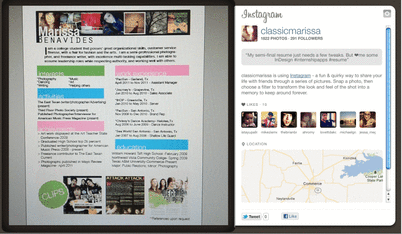 Business Insider has 23 examples of cool resumes using Instagram, the image-based website that Facebook just bought for $1 billion. They said in their intro: It seems like a boring black and white resume won't get you very far anymore. Inspired by 7 cool resumes we found on Pinterest, we scoured Instagram for some more. Here are the most creative resumes we found. View all 23 here Some of the examples are stunning, others quirky, and all are young...very young. This really can work for you if you are under 30 and fighting for visibility in this very tough job market for early professionals. Certainly it can give anyone in the creative arts, digital media, and technology an extra edge and opportunity to showcase their talents. But will Instagram and Pinterest work for mid-career experienced professionals and senior executives? A qualified yes. It depends on the sector, the role and position level. In heavy equipment manufacturing at the C-level it would not be advisable. At least not this year. But in consumer packaged goods, fast moving consumer goods, hospitality, sports, recreation, entertainment, consumer electronics, fashion, advertizing, and technology sectors, those sites could well be a differentiating addition to your online branding. The position is important too. Traditional fields of finance, insurance, risk management, facilities management, for example, don't lend themselves, right now, to this kind of treatment. This kind of personal branding would not be expected nor accepted in more conservative sectors or professions. With all of the above caveats, in the parade, it is far better to ahead of the elephants and horses than behind. In 2003, when Linkedin launched nobody had ever heard of it let alone wanted to join and connect. Back then it was easy to get thousands of connections (and I did) and now you have to buy them. My advice is to register your name on Pinterest and Instagram to just hold a place for your profile. Eventually they will become acceptable social sites like linkedin is now and you then can leverage them for online branding. See all my blogs and website on Pinterest boards . Instagram is next. 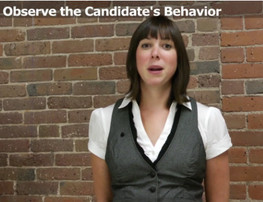 from About.com video coaching interviewers How to Judge Potential Employees on Behavior and Mannerisms This is the title of a video from About.com Human Resources that says,"A potential employees behavior and mannerisms can be the most telling part of the job interview. Learn how to gauge actions and behavior to see if the candidate would be a successful employee." Hopefully, I have successfully reverse engineered the process advised in this video so that my clients display appropriate interview behaviors to match any interviewer. Our goal is always to do what it takes to turn the interview into an offer. You can always turn down an offer if you think your are not a fit or it isn't quite the right opportunity. But you don't want to hand over that power to the interviewer. You control your total delivery during the interview, not just what you say but how you look, sound and move when you respond. The most scary statement a recruiter can make is to tell you to relax and be yourself. Do not do that! But this does put you on the alert to be very attentive to the recruiter's body language, mannerisms and the non-verbal feedback to the answers that you supply to their questions. That's exactly what they are doing to you! Interviewing as an art should be a well choreographed dance between you and the interviewers. How many times have you lost out on a great position because you didn't read the interviewer correctly or rubbed them the wrong way? Record your voice as you practice answering questions. Use your laptop to video your practice interviews. Microsoft OneNote will actually record the screen as you to this so you can track your improvement. If you get really good at interviewing in any situation, with any style of interviewer, and any company then you can afford to be your self when you want to not when they want you to.  The tendency to hire people we know is deeply embedded into our DNA. Man (and woman) has a tribal orientation inculcated into his system since the Pleistocene cave dwellers. Tribes working cooperatively have been integrally to commerce from the surf system of the feudal middle ages, and the guilds of the Renaissance to modern day. Fortunately our comfort with the size and number of our tribes has grown significantly beyond our nomadic/agrarian roots. Our DNA instinctual drive for belonging to the group is embedded in business processes today. In Reid Hoffman's new book, The Startup of You, he makes the point that our opportunities and business success comes from our networks e.g. tribes. Networking inside or outside organizations requires meeting people you don't know and being able to talk about yourself and find out about them. I have executive clients with minimal footprint on Linkedin expect the perfect job posting to magically appear. Building a network is not learned behavior. Growing and advancing within a big company depends on who knows you and who gets to know and like you. Those whose networking fluency is weak or not a style fit for their company culture rail against the corporate "politics" they face when they should be getting better at networking. Why is networking so hard? As much as we like to belong, we are hardwired in our DNA for a adrenal reaction of flight or fight that gives us a wariness, if not fear, of the new, the unknown, and change. Networking requires all of the above: we must change our behavior and reach out to unknown people to grow connections. It is an interesting DNA dynamic, we have move past our wariness of meeting new people in order to satisfy our drives to belong to a group (tribe). I agree with Reid, that anyone who develops fluency in networking will up their success quotient in their careers because doors are opened by people you know. The easiest first thing to do to grow your network is use Linkedin, Viadeo, and Xing to invite people to connect with you. It is a great start on instantly building your a base of hundreds if not thousands of contacts. The next easiest step is to start attending events: professional associations, conferences, trade shows and alumni groups to meet people.  There are known knowns. These are things we know that we know. There are known unknowns. That is to say, there are things that we know we don't know. But there are also unknown unknowns. There are things we don't know we don't know. Donald Rumsfeld I laughed when the then Secretary of Defense made that statement as it sounded like a military-speak aphorism. But, it rings with profound wisdom the more I deal with career management and employment issues in this economy. How do we deal with the business and career issues we don't know we don't know? I advise my clients to do deep research on companies for interview preparation, but that never, within time parameters, uncovers sufficient information to make a well reasoned decision on an offer if one comes. Sometimes it is the luck of the draw that you land well. What do you do with networking referrals devoid of context or personal engagement? You are left in a vacuum to deal with the referral and in the dark as to how to proceed. Time is so precious. You know it if you are in a driven high-pressure position, in career transition, or an entrepreneur. There isn't enough of it, and your living comes from the finite amount of time that you can dedicate to your business. We don't have time to be sidetracked with the unknowns that we don't know. What's worse is that we don't know what we don't know until it is past tense. Often in retrospective, we can look back at an entire situation and see what we needed to know at the time. I believe that is the Monday morning quarterback syndrome personified. Unfortunately, I don't know what to advise you as I don't know what you don't know. But I do have a few mental guidelines that help me and I am happy to share them. Everyday is Groundhog Day Remember the Bill Murray movie where he relived the same day over and over again until he actually had no unknowns left to figure out. Seriously! He ended up knowing everybody in the town and everything they were going to do that day. His level of response by his final rerun day was masterful. I try to remind myself that every day is essentially the same. Within each day there will always be unknowns that are unknown. The result of that attitude is not ending up feeling blindsided as I have already factored that in. When I stay very attuned and mindful I can almost sense them coming out of left field. It is comforting at least. Belts and Braces The British, bless them, had an unspoken rule about being prepared for the unknowns in life. Back in Victorian times and the early part of the last century, men work both a belt and braces (suspenders). Over time and the era of spandex and jeans below your butt, the braces have fallen by the wayside. But belts and braces represented a way of approaching life. The message is clear, expect catastrophe and be doubly prepared: keep an umbrella in the car, hide a house key under a rock, back up your files...twice. You may never need to implement plan B but it's good to know that you can. Think about it. That's why we have a Vice President of the United States. The Morning After the Night Before Letting decisions stew a bit is a good thing. Figuratively, "sleeping" on business problems and issues allows time to have more information unfold and it diminishes the number and size of unknowns. There are certain Myers Briggs personalty types that are really in their comfort zone when they get things decided, goals set, and marching orders relayed to the troops in an expedited fashion. They rush to judgement and freak out when the other shoe drops with unforeseen catastrophes. Other personality styles prefer to put off decisions and just let things unfold. Often that is the best remedy for those blindsiding unknowns. Just let them sort of slide into view rather than dropping on you. Embrace the Unknown The greatest adventures, opportunities and joys in life are most sweet when they have not been predicted, expected, and factored in. Aren't the unknown unknowns often some of the nicest, best surprises that come upon us. We just think that any unknown will be necessarily be bad, negative and undesired. If life is like a box of chocolates then it helps to be an epicurian with a broad palette. Thus you are delighted with whatever you find in the box. The unknown unknowns will always show up in our lives. The impact they have depends on how we choose to experience them.  What is worse than job interviewing in person? Interviewing with a bad webcam using a poor SKYPE connection. You end up with the goldfish bowl look because of the camera distortion. Or your eyes are always looking down at the screen at the interviewers to whom you give no eye contact. The fine art of interviewing is not improving anytime soon. It can still be a painful, dreaded, nerve-wracking experience on both sides of the desk. Everyone has a nightmare story about the "interviewer from hell", someone who was so bad at asking questions that you absolutely knew you were never going to be hired. What about the interviewer who doesn't ask questions but rather just chats as the new best friend that you never hear from again? Or, the interviewer who asks questions so unrelated to the job you wonder if you applied for the wrong position? Then there is the distainful interviewer, who acts as though it is a supreme imposition just having you in the room. I could go on and you can in the comments section to this blog. How Do You Ace It? Yes, bad interview stories are abundant. However, it still is on you to acquit yourself well during the interview. What does that mean? - Should you ace all the questions with absolutely appropriate answers? - Should you offer great, relevant examples, facts and figures with glib ease? - Should you mirror the interviewers body language to make him/her comfortable in your presence? - Should you create a dialogue to interact in easy conversation, thus putting your interviewer at ease? - Should you provide business solutions to demonstrate the compelling value in hiring you? Yes, of course, to all of the above! But, while that will certainly go a long way to getting you hired, that's not it. If you do everything above, unless you are a glow-in-the-dark java software developer, it is not enough to be hired. And, if you do just some of the above with a less than stunning acquittal of your expertise and you successfully do one more thing, odds are that you will be hired. Thanks to Macstories for this list.
“Sometimes when you innovate, you make mistakes. It is best to admit them quickly, and get on with improving your other innovations.” – via “Being the richest man in the cemetery doesn’t matter to me … Going to bed at night saying we’ve done something wonderful… that’s what matters to me.” – Wikiquote, as quoted in The Wall Street Journal (Summer 1993). “We’ve gone through the operating system and looked at everything and asked how can we simplify this and make it more powerful at the same time.” – ABC News, Jobs on Mac OS X Beta “Be a yardstick of quality. Some people aren’t used to an environment where excellence is expected.” “I want to put a ding in the universe.” “I was worth over $1,000,000 when I was 23, and over $10,000,000 when I was 24, and over $100,000,000 when I was 25, and it wasn’t that important because I never did it for the money.” “Unfortunately, people are not rebelling against Microsoft. They don’t know any better.” – Wikiquote, Interview in Rolling Stone magazine, no. 684 (16 June 1994) “Bill Gates‘d be a broader guy if he had dropped acid once or gone off to an ashram when he was younger.” – The New York Times, Creating Jobs, 1997 “The only problem with Microsoft is they just have no taste. They have absolutely no taste. And I don’t mean that in a small way, I mean that in a big way, in the sense that they don’t think of original ideas, and they don’t bring much culture into their products.” – YouTube “My job is not to be easy on people. My jobs is to take these great people we have and to push them and make them even better.” – All About Steve Jobs “We made the buttons on the screen look so good you’ll want to lick them.” – Wikiquote, as quoted in Fortune magazine (4 January 2000) “Click. Boom. Amazing!” – Macworld keynote 2006 “You can’t just ask customers what they want and then try to give that to them. By the time you get it built, they’ll want something new.” – Inc. Magazine “That’s not what we think design is. It’s not just what it looks like and feels like. Design is how it works” – New York Times, The Guts of a New Machine, 2003 “Why join the navy if you can be a pirate?” - As quoted or paraphrased in Young Guns: The Fearless Entrepreneur’s Guide to Chasing Your Dreams and Breaking Out on Your Own (2009) by Robert Tuchman “Innovation distinguishes between a leader and a follower.” – via “I mean, some people say, ‘Oh, God, if [Jobs] got run over by a bus, Apple would be in trouble.’ And, you know, I think it wouldn’t be a party, but there are really capable people at Apple. My job is to make the whole executive team good enough to be successors, so that’s what I try to do.” – CNNMoney “It’s not about pop culture, and it’s not about fooling people, and it’s not about convincing people that they want something they don’t. We figure out what we want. And I think we’re pretty good at having the right discipline to think through whether a lot of other people are going to want it, too. That’s what we get paid to do.” – CNNMoney “So when a good idea comes, you know, part of my job is to move it around, just see what different people think, get people talking about it, argue with people about it, get ideas moving among that group of 100 people, get different people together to explore different aspects of it quietly, and, you know – just explore things.” – CNNMoney “When I hire somebody really senior, competence is the ante. They have to be really smart. But the real issue for me is, Are they going to fall in love with Apple? Because if they fall in love with Apple, everything else will take care of itself. They’ll want to do what’s best for Apple, not what’s best for them, what’s best for Steve, or anybody else.” – via “We don’t get a chance to do that many things, and every one should be really excellent. Because this is our life. Life is brief, and then you die, you know? And we’ve all chosen to do this with our lives. So it better be damn good. It better be worth it.” – Fortune “Almost everything–all external expectations, all pride, all fear of embarrassment or failure–these things just fall away in the face of death, leaving only what is truly important. Remembering that you are going to die is the best way I know to avoid the trap of thinking you have something to lose. You are already naked. There is no reason not to follow your heart.” – Steve Jobs’ Stanford Commencement Address “Here’s to the crazy ones, the misfits, the rebels, the troublemakers, the round pegs in the square holes… the ones who see things differently — they’re not fond of rules… You can quote them, disagree with them, glorify or vilify them, but the only thing you can’t do is ignore them because they change things… they push the human race forward, and while some may see them as the crazy ones, we see genius, because the ones who are crazy enough to think that they can change the world, are the ones who do.” – Think Different, narrated by Steve Jobs “In most people’s vocabularies, design means veneer. It’s interior decorating. It’s the fabric of the curtains of the sofa. But to me, nothing could be further from the meaning of design. Design is the fundamental soul of a human-made creation that ends up expressing itself in successive outer layers of the product or service.” – Fortune “So we went to Atari and said, ‘Hey, we’ve got this amazing thing, even built with some of your parts, and what do you think about funding us? Or we’ll give it to you. We just want to do it. Pay our salary, we’ll come work for you.’ And they said, ‘No.’ So then we went to Hewlett-Packard, and they said, ‘Hey, we don’t need you. You haven’t got through college yet.” – Classic Gaming “The people who are doing the work are the moving force behind the Macintosh. My job is to create a space for them, to clear out the rest of the organization and keep it at bay.” – Macworld “Your time is limited, so don’t waste it living someone else’s life. Don’t be trapped by dogma – which is living with the results of other people’s thinking. Don’t let the noise of other’s opinions drown out your own inner voice. And most important, have the courage to follow your heart and intuition. They somehow already know what you truly want to become. Everything else is secondary.” - Steve Jobs’ Stanford Commencement Address “I’m the only person I know that’s lost a quarter of a billion dollars in one year…. It’s very character-building.” – Wikiquote, as quoted in Apple Confidential 2.0: The Definitive History of the World’s Most Colorful Company (2004) by Owen W. Linzmayer “I’m as proud of what we don’t do as I am of what we do.” – Businessweek “Quality is more important than quantity. One home run is much better than two doubles.” – Businessweek “I’ve always wanted to own and control the primary technology in everything we do.” – The Seed of Apple’s Innovation “It comes from saying no to 1,000 things to make sure we don’t get on the wrong track or try to do too much.” - The Seed of Apple’s Innovation “It’s really hard to design products by focus groups. A lot of times, people don’t know what they want until you show it to them.” – Businessweek, 1998 “Innovation has nothing to do with how many R&D dollars you have. When Apple came up with the Mac, IBM was spending at least 100 times more on R&D. It’s not about money. It’s about the people you have, how you’re led, and how much you get it.” - Fortune, Nov. 9, 1998 “I’m convinced that about half of what separates the successful entrepreneurs from the non-successful ones is pure perseverance.” “It’s rare that you see an artist in his 30s or 40s able to really contribute something amazing.” – Playboy interview, 1985 “I feel like somebody just punched me in the stomach and knocked all my wind out. I’m only 30 years old and I want to have a chance to continue creating things. I know I’ve got at least one more great computer in me. And Apple is not going to give me a chance to do that.” – Playboy, 1987 “I didn’t see it then, but it turned out that getting fired from Apple was the best thing that could have ever happened to me. The heaviness of being successful was replaced by the lightness of being a beginner again, less sure about everything. It freed me to enter one of the most creative periods of my life.” - Steve Jobs’ Stanford Commencement Address “Do you want to spend the rest of your life selling sugared water or do you want a chance to change the world?” – Steve Jobs’ famous question to John Sculley, former Apple CEO “The products suck! There’s no sex in them anymore!” – Businessweek “The cure for Apple is not cost-cutting. The cure for Apple is to innovate its way out of its current predicament.” - As quoted in Apple Confidential 2.0: The Definitive History of the World’s Most Colorful Company (2004) by Owen W. Linzmayer “If I were running Apple, I would milk the Macintosh for all it’s worth — and get busy on the next great thing. The PC wars are over. Done. Microsoft won a long time ago.” – Fortune, 1996 “You know, I’ve got a plan that could rescue Apple. I can’t say any more than that it’s the perfect product and the perfect strategy for Apple. But nobody there will listen to me.” – Fortune, 1995 “Apple has some tremendous assets, but I believe without some attention, the company could, could, could — I’m searching for the right word — could, could die.” – TIME, 1997 Too often I have seen executives come out of specific corporations noted for their strong cultures and not do well in adjusting to a radical career move into a much different culture. I read in Deal and Kennedy's book, Corporate Cultures, that the founders of an organization set the tone and the style of the culture.
I suppose this is obvious when you look at companies with notable CEO's such as Apple's Steve Jobs, Berkshire or Hathaway's Warren Buffet. It is less obvious to connect the style of IBM to Thomas Watson the primary CEO who grew the company from selling typewriters to a computer manufacturer. Can we see the imprint of Henry Ford anymore on Ford Motor Company, or of Christian Dior on the House of Dior? It seems the farther was the organization is from its early roots and founder in terms of time and even geography the more imperceptible the origin of the culture becomes. I mean where is Erle P. Halliburton's ghost now that the company moved to a new HQ in Dubai? Nevertheless, the imprint of custom, tradition, and personality remains in how the employees conduct business, interact with each other and the world. A former hedge fund and derivatives operative from a prominent, infamous investment banking firm inquired about my services. The dynamics of the process with him was interesting. Once he determined that he wanted to engage my services he started to negotiate the deal. To him it was just a normal business transaction and his way of doing it. He started on price, even though I offer multiple packages at different flat rates that are substantially lower than my hourly rate, he tried to haggle over my fees. When that didn't work he turned to terms and conditions by trying to combine multiple packages and extend the time spent by breaking down sessions into 30 minutes each...all, of course at the lowest rate. I decided not to work with him as our styles just did not match as he comes from a culture that is deal driven and so he is and I am so not. The moral of the story is that we all come from multiple unique cultures, not just your family of origin, but your professional field, and the organizations where you have been employed. Developing your awareness to your personality and behaviors traits enable you to make better "fit" decisions when evaluating your career options. |
Categories
All
Archives
May 2019
Licensed by CC-by-SA
|
